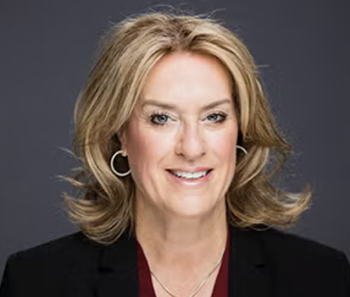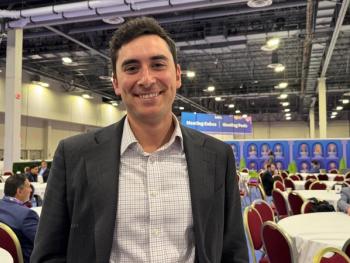
What hospitals should think about with remote patient monitoring
Health systems need to make sure the technology is easy for patients to use. Providers also must consider the workflows for clinicians.
More hospitals and health systems are using technology to monitor patients remotely, and healthcare experts expect remote programs to increase in the future.
Boston Medical Center, working with Rimidi, a healthcare technology company, is remotely monitoring the blood pressure of postpartum patients, and has managed to get some patients treated before suffering strokes. The medical center has recently expanded the program to monitor patients during pregnancy.
Many see enormous potential in remote patient monitoring. The remote patient monitoring technology market is projected to reach $175 billion by 2027, up from $23 billion in 2020, according to MarketsandMarkets.
While remote monitoring programs can improve patient care, healthcare leaders say hospitals and health systems must design their programs carefully. They need to consider how patients and providers will use them, said Robert Havasy, senior connected health director at the Health Information and Management Systems Society (HIMSS).
In some ways, the technology in remote patient monitoring is the easy part, Havasy said.
“The hard part is getting the devices in patients' hands, getting them comfortable and able to use them,” he said.
(In this video, we talked with Lucienne Ide of Rimidi and Christina Yarrington of Boston Medical Center about developing a successful remote patient monitoring program. The story continues below the video.)
The shift will continue
More hospitals and health systems are expected to use remote patient technology in the future, partly out of necessity. As health systems continue to see a shortage of clinicians, hospitals are going to turn more to remote patient monitoring and telehealth, said Hal Wolf, president of HIMSS.
“You will absolutely see and continue to see the shift of care from home,” Wolf told Chief Healthcare Executive in a recent interview. “Whether that will show itself as devices that are monitoring individuals, and home monitoring is going to be huge, and continues to grow, and you can see the investments that are starting to be made.”
More health systems are using remote monitoring, but not too many are being employed at a large scale, Havasy said. Most programs tend to be in urban areas.
Health systems are likely to use remote patient monitoring to supplement telehealth programs, Havasy said. Organizations that are utilizing telehealth are seeing video only goes so far, without records of patient weight, blood pressure and other key indicators, he said.
Remote monitoring programs take many forms. Early in the COVID-19 pandemic,
Remote monitoring has been a part of healthcare longer than many realize. Many diabetes patients have been tracked using remote monitoring for decades.
“Diabetes is the only disease where remote monitoring has been the standard of care for almost 50 years,” Havasy said. “Remote monitoring is the way diabetes is treated in the United States.”
Remote monitoring programs can help patients be more mindful of their health.
“People behave differently when they think someone’s watching them,” Havasy said. “People tend to make different choices than they would if they thought no one was watching.”
‘Accessible and usable’
As health systems use remote monitoring technology, they need to design programs so they mesh with the lives of patients.
“You’re asking patients to adopt a new technology,” he said. “The principles of adopting technology apply to patients as well as providers.’
Havasy said the use of technology needs to be more focused on patients than information technology teams.
Hospitals and health systems should ask a key question, Havasy said: “How do you make these things disappear in the background and work in the lives of the patients and providers that are going to use them?”
Health systems also don’t need to use the most modern smartphones in their programs, Havasy noted. With the growth of secondary markets, older smartphones can be purchased at lower costs.
Some hospitals are using remote patient technology to track chronic conditions such as hypertension, as Boston Medical Center is doing.
The Boston Medical Center partnership with Rimidi illustrates the importance of designing programs with patients in mind. Patients are asked to simply put on a blood pressure cuff and press a button, and nurses at the medical center get alerts if someone is experiencing a sharp increase. Partly due to the ease of the technology, 98.7% of patients checked their blood pressure at least once. (A study of the program was published in
Christina Yarrington, director of labor and delivery at Boston Medical Center, said it was important to find a solution that didn’t require her patients to use smartphones. Most of her patients rely on Medicaid and have low incomes. Earlier in the pandemic, Boston Medical Center discovered patients with limited data plans had trouble accessing video telehealth services.
“The problem was not that they didn’t have devices,” Yarrington said. “Everybody has a smartphone, almost irregardless of income, but the data plan question was actually a really big deal.”
For hospitals and health systems that are just beginning their remote patient monitoring programs, they need to keep in mind that patients need to be able to use the technology with minimal effort, said Lucienne Ide, CEO and founder of Rimidi.
“If you’re going to implement a remote monitoring program, if you don’t roll out technology that is accessible and usable by your patients, you’re not going to get any data back,” Ide said.
Health systems should focus on “really tailoring the technology you’re deploying to the patient population that you’re serving,” she said. She noted that a remote monitoring program for seniors will look different than a program for postpartum patients.
Considering health equity
Hospitals also need to consider health equity and all the social determinants of health in setting up remote monitoring programs.
Health systems need to consider the needs of a diverse set of populations. As Havasy said, “How do we make the technology welcoming to a variety of populations?”
At Boston Medical Center, even when patients with high blood pressure were identified as needing care, it wasn’t always easy to get some patients the help they needed.
“We realized that there are some people where we had their information,” Yarrington said. “We got in contact. Our nurse managed to get electronic prescriptions sent to their pharmacy. Yet two days later, they were higher and higher and they did come into the hospital. We realized they couldn’t get to a pharmacy.”
Now, she said, the medical center is working to arrange courier service for patients that need medication but have trouble getting to a pharmacy.
But it underscores the importance of considering all the factors that affect an individual’s health.
“It’s just mind blowing to me all the little places where things can fall apart,” Yarrington said. “I think I’m solving it with data. It’s not. I need a prescription. I think I’ve solved it with a prescription. I’m not. The meds still aren’t in their hands. The social determinants of health I think play a huge role in this as well.”
Keep it easy for staff
Patient engagement and accessibility “is half of the equation,” Ide said. Health systems need to consider the workflow aspects involved in managing remote monitoring programs.
“The ability for the system to be smart enough to help triage and prioritize patients and workflows, is really key to the sustainability and scalability,” Ide said.
Most health systems don’t want to start programs that can only serve 100 patients at most. “It’s nobody’s goal to do a whole bunch of small pilot programs,” Ide said.
Health systems need to consider how providers will use and work with the remote monitoring programs.
“Streamlining workflows is critical to success. Anything you introduce needs to take burden and ease of use into account,” Havasy said.
Health systems are already keenly aware of the burnout of their teams, and need to design programs with doctors and nurses in mind. Just as the technology needs to be accessible to patients, it needs to be manageable for clinicians.
As Havasy said, “Don't use technology to make an existing process worse.”
It’s also important for programs to interface with electronic health records, Ide and Yarrington said. Patients need to be able to access patient data quickly.
Change is sometimes “really hard,” Yarrington said. In implementing the remote patient monitoring program, she said the key was not asking too much of too many people.
“If you try to institute a change that requires a small modification from 20 people, it’s going to be incredibly challenging,” Yarrington said. “If you can make a small modification to two or three that can then disseminate it to the rest, you really drop a lot of barriers.”








































